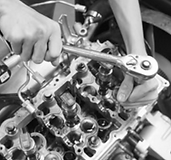Engineering and Technology Quarterly Reviews
ISSN 2622-9374




Published: 11 September 2018
Solar Cells: Module Temperature and Maximum Power Tracking
Ahmad Ullah Tahid
Islamic Azzad Izzad, Iran

Download Full-Text Pdf
10.31014/aior.1995.01.01.1
Abstract
Photovoltaic cell has become the most utilized renewable energy resource for the production of power directly from the sun radiations but it has comparatively lower efficiency than other power producing sources and is expensive too. Out of many reasons of lower efficiency of PV cells; some factors are studied in this work i.e. temperature of the module, maximum power point tracking (MPPT) and the efficiency of energy transformation. From the experimentation it was concluded that the rise in the temperature of solar cell, after an optimum level, declines its efficiency by 0.5% for each unit rise in temperature (/°C). So an appropriate method should be adopted to control the temperature of the panel. The energy conversion efficiency was increased with the reduction in the reflection of the incident rays coming from the sun, so that more photons are absorbed by the cell thus achieving increment in energy conversion and MPPT adjust the working point of PV cell under varying intensity of sunrays which is achieved when the tracker changes the solar cell’s equivalent load.
References
-
Chopra, K.L., Mathew, X. 2008. Reporting Solar Cell Efficiencies in Solar Energy Materials and Solar Cells. Solar Energy Materials & Solar Cells, 92, pp. 371-373.
-
Wai, R.J., Wang, W.H., Lin, C.Y. 2008. High-Performance Stand-Alone Photovoltaic Generation System. Proc. of IEEE Transactions on Industrial Electronics, pp. 240-250.
-
Goetzberger, A., Hebling, C., Schock, H.W. 2003. Photovoltaic Materials, History, Status and Outlook. Materials Science and Engineering, 40, pp. 1-46.
-
Singh, P., Ravindra, N.M. 2012. Temperature dependence of solar cell performance—an analysis. Solar Energy Materials and Solar Cells, 101, pp. 36–45.
-
Benghanem, M., Al-Mashraqi, A.A., Daffallah, K.O. 2016. Performance of solar cells using thermoelectric module in hot sites. Renewable Energy, 89, pp. 51-59.
-
Ma, X.J., Wu, J.Y., Sun, Y.D., Liu, S.Q. 2009. The Research on the Algorithm of Maximum Power Point Tracking in Photovoltaic Array of Solar Car. Vehicle Power and Propulsion Conference IEEE, pp. 1379-1382.
-
Singh, G.K. 2013. Solar power generation by PV (photovoltaic) technology: A review. Energy, 58 (1), pp. 1- 13.
-
Dincer, F., Meral, M.E. 2006. Driving Performances of Solar Energy Powered Vehicle with MPTC. Smart Grid and Renewable Energy, 1, pp.47-50.
-
Kawamura, H., Naka, K., Yonekura, N., Yamanaka, S., Kawamura, H., Ohno, H. 2003. Simulation of I– V characteristics of a PV module with shaded PV cells. Solar Energy Materials and Solar Cells, pp. 613–621.
-
Chander, S., Sharma, A.P., Nehra, S.P., Dhaka, M.S. 2015. Impact of temperature on performance of series and parallel connected mono-crystalline silicon solar cells. Energy Reports, 1, pp. 175–180.
-
Teo, H.G., Lee, P.S., Hawlader, M.N.A. 2012. An active cooling system for photovoltaic modules. Applied Energy, 90, pp. 309–315.
